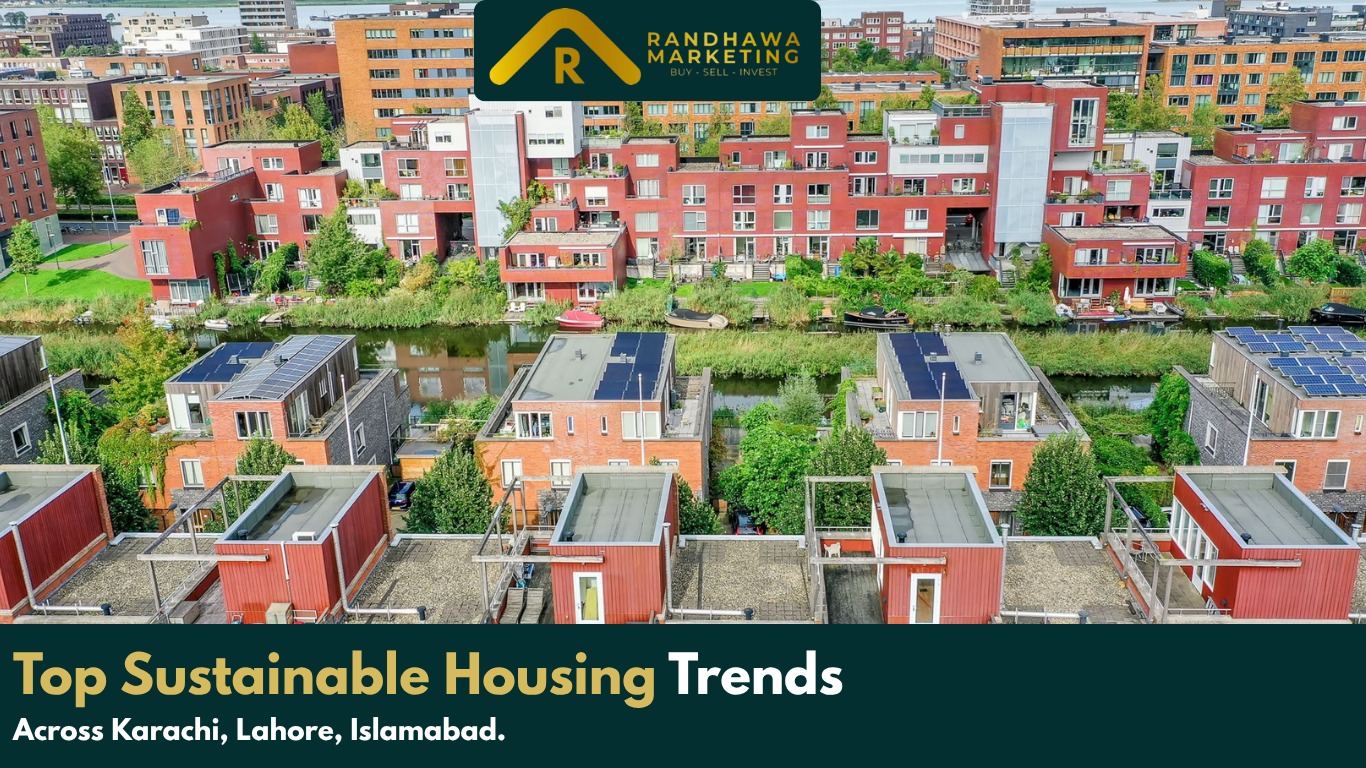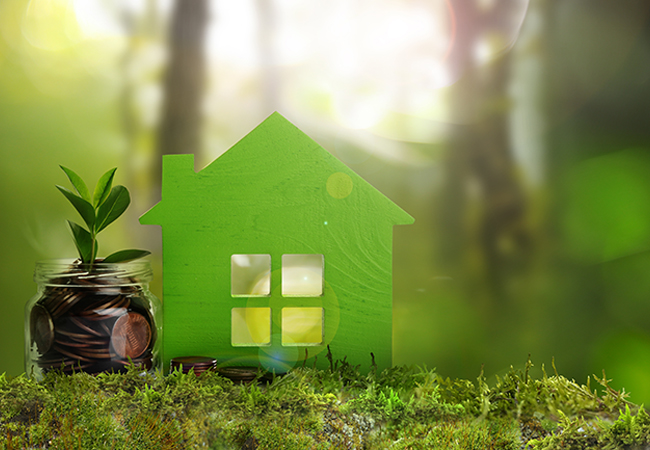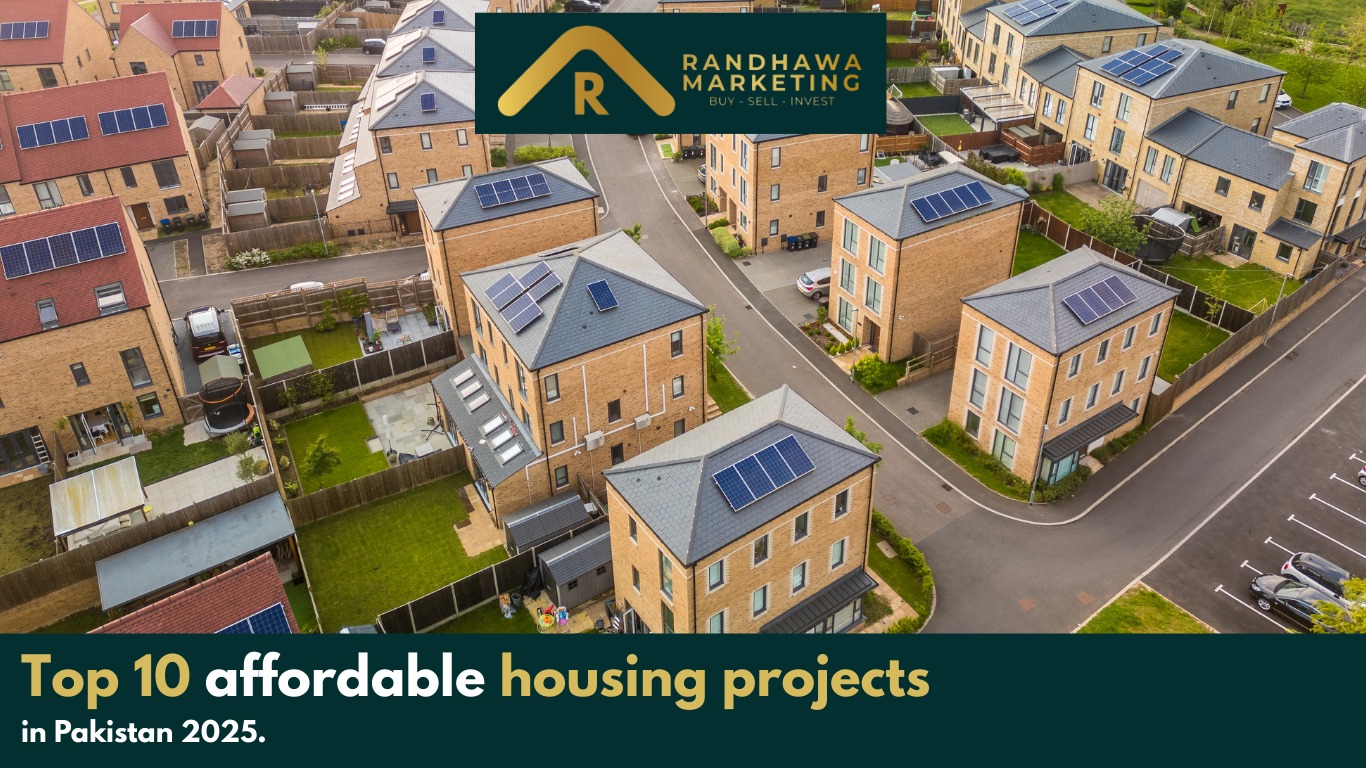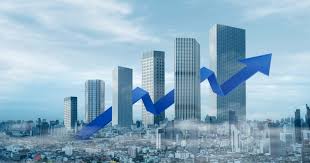Top Sustainable Housing Trends Across Karachi, Islamabad, Lahore
Top Sustainable Housing Trends across Karachi, Lahore, Islamabad
Sustainable housing is no longer a niche concept in Pakistan-it is fast becoming a mainstream development priority in major cities like Karachi, Lahore, and Islamabad. Rising climate risks, rapid urbanization, and the growing demand for healthier, eco-friendly living spaces are pushing developers, governments, and residents toward greener solutions.
From modular solar-powered homes in Karachi to smart eco-communities in Lahore and renewable-powered urban spaces in Islamabad, each city is embracing sustainability in unique ways. Here’s a closer look at how the movement is evolving and what trends are shaping Pakistan’s housing future.
Karachi: Climate-Resilient & Innovative Housing
1. ModulusTech Net-Zero Modular Homes
This pioneering project offers off-grid, flat-packed homes equipped with solar power, costing around Rs 2.8 million (~$12/sq ft). Designed for rapid construction and accessibility, they feature barrier-free layouts for persons with disabilities and promote women’s co-ownership, combining sustainability with social inclusion.
2. Green Canopy Commune
A visionary community blending desert-inspired architecture with sustainability: it uses solar textiles, mist-based water harvesting from Karachi’s humidity, local sand-based 3D-printed concrete with thick walls for natural climate control and energy savings.
3. DHA City Karachi
A large-scale urban development integrating rainwater harvesting, LED street lighting, lush green landscapes, and botanical gardens to promote environmental balance and improve urban livability.
Lahore
1. Lahore Smart City
An advanced development featuring zero-waste ecosystems, smart energy grids, solar farms, and IoT-enabled homes that optimize energy and water usage.
2. Eighteen Lahore (Planned)
A premium, eco-conscious housing project aiming for LEED certification. It plans to integrate renewable energy sources, sustainable landscaping, and cutting-edge building standards.
3. Urban Developers – Central Park Eco-Villas
These villas incorporate solar rooftops, rainwater reservoirs, and smart irrigation systems—setting a benchmark for green residential design.
4. Lahore Composting Facility
Although not a housing project, this public-private initiative significantly reduces landfill waste by converting organic waste into compost, contributing indirectly to a cleaner urban environment.
Islamabad: Planned Green Urban Living
1. Capital Smart City Islamabad
This eco-forward smart city integrates green belts, wildlife-friendly zones (including a panda reserve), eco-conscious infrastructure, and advanced waste management systems alongside recreational spaces like a scenic golf course.
2. Airport Green Garden
Located in Rawalpindi but serving the Islamabad metro area, this project prioritizes open green spaces, parks, reliable electricity, and a community-friendly environment.
3. Blue World City & Others
Developments such as Blue World City, Faisal Town, and Kingdom Valley focus on water conservation, green landscaping, lake creation, and energy-efficient infrastructure.
Key Sustainable Housing Trends in Pakistan
1. Green Buildings – Use of eco-friendly construction materials like bamboo flooring, non-toxic paints, recycled steel, and compliance with global green building standards.
2. Smart Sustainable Design – Integration of automated systems for lighting, energy, and security to enhance efficiency.
3. Water & Energy Conservation – Solar power, insulated walls, double-glazed windows, rainwater harvesting, and low-flow fixtures are becoming standard.
4. Modular & Prefabricated Housing – Faster, cost-effective builds with minimal waste.
5. Locally Sourced Materials – Bamboo, fly-ash bricks, and recycled steel help reduce carbon footprints.
6. Green Spaces – Vertical gardens, rooftop greenery, and urban parks for improved air quality and insulation.
7. City-Level Urban Planning – Large-scale projects like the Ravi Riverfront in Lahore, which features urban forests, green belts, lakes, and water treatment plants.
8. Shared Eco-Housing Amenities – Rainwater collection, composting toilets, rooftop gardens, and community solar systems fostering sustainability and social cohesion.
Top factors driving sustainable housing in Pakistan
Government Initiatives: Incentives, green building codes, and renewable energy policies encourage developers to adopt eco-friendly practices.
Public Awareness: Growing recognition of environmental and health benefits is influencing homebuyers’ choices.
Technological Advancements: Smart home systems, efficient materials, and advanced construction techniques are making sustainable housing more accessible.
Lifestyle Preferences: Demand for energy-efficient, tech-integrated homes is increasing, especially among younger buyers.
CONCLUSION
The sustainable housing movement in Karachi, Lahore, and Islamabad r eflects Pakistan’s growing commitment to a greener future. Karachi’s efforts focus on climate resilience with modular homes, flood-adaptive designs, and passive cooling systems. Lahore stands out with smart eco-cities and large-scale riverfront projects emphasizing renewable energy and urban forestry. Islamabad, with its planned urban layout and stricter zoning laws, is setting an example for nationwide green building regulations. As technology, awareness, and policy continue to align, sustainable housing is set to move from an emerging trend to the standard for urban living in Pakistan.



